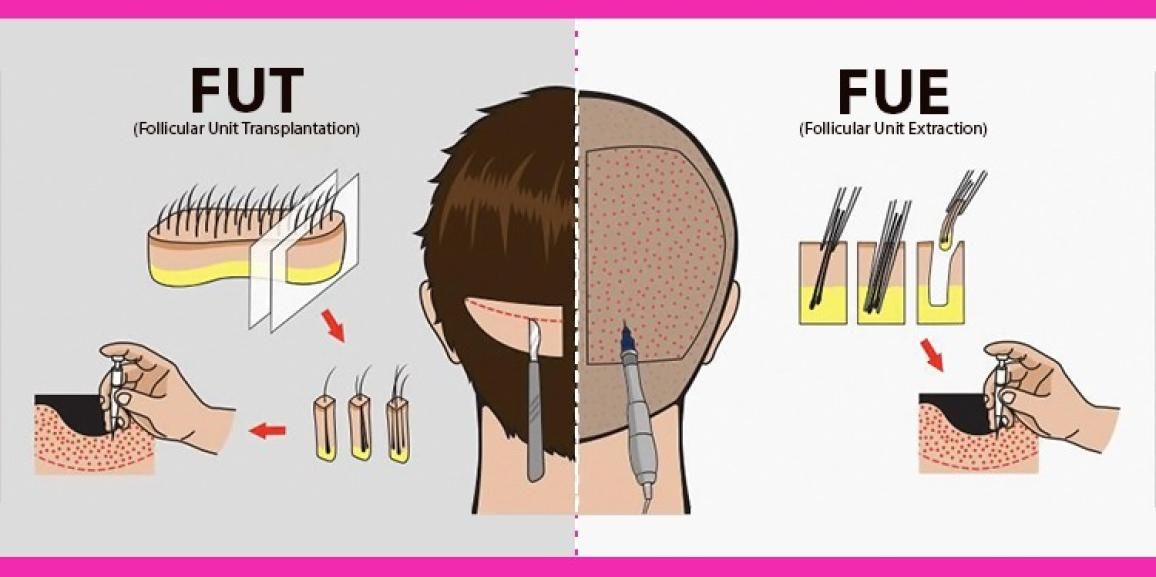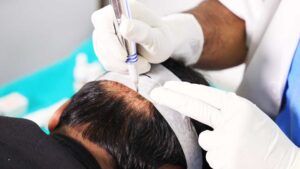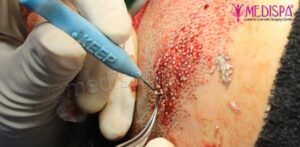
Among the various aesthetic concerns, hair loss is undoubtedly one of the most distressing experiences one can go through. Consequently, the significance of remedies and treatments for hair loss has been increasing in recent times. Hair transplantation stands as the sole permanent solution for hair loss, capable of lasting a lifetime when performed with expertise.
Hair transplantation involves the restoration of hair by relocating hair from the back and sides of the head (known as the donor area) to the recipient area. It is important to note that this procedure focuses on restoring hair rather than regenerating it. Individuals who are experiencing any form of baldness or desire to alter their hairline pattern for aesthetic reasons can opt for hair transplantation.
When considering hair transplantation, individuals often have concerns regarding the longevity of the transplanted hair and the natural appearance of the results. Fortunately, hair transplant techniques have made significant advancements over time. These advancements ensure successful outcomes and desirable aesthetic results.
The fundamental procedure of hair transplantation entails harvesting grafts from the donor area and subsequently implanting them into the recipient area. Graft harvesting can be accomplished through two primary methods:
- The FUT hair transplant, also known as follicular unit transplantation or strip technique, involves removing a thin strip of scalp and then separating the follicular grafts under magnification. These grafts are then implanted into the recipient area to promote hair growth.
- On the other hand, the FUE hair transplant, or follicular unit extraction, involves extracting individual follicular units using a motorized or manual surgical device. These units are then implanted into the recipient site to achieve hair restoration.
The choice between these techniques depends on various factors such as the extent of hair loss according to Norwood’s classification, the patient’s age, the quality and quantity of available donor hair, and the area of baldness. It is crucial for the clinician to carefully consider these factors in order to achieve the best possible outcome for the hair transplant procedure.
Differences between FUE hair transplant and FUT hair transplant:
- Harvesting Technique:
FUT: The technique involves harvesting a thin strip from the donor area and then dissecting it to separate each follicular graft.
FUE: The technique involves individually extracting follicular grafts using a surgical device similar to a punch.
- Scarring:
FUT: When a thin strip is harvested and a more advanced suturing technique called “trichophytic closure” is used, the scarring is almost invisible.
FUE: There may be an almost invisible circular scar, which can be further minimized by extracting each follicle from a greater distance.
- Number of grafts obtained:
FUT: This technique typically yields a higher number of grafts, approximately 3000-3500 grafts.
FUE: This technique usually results in a lower number of grafts, approximately 2000-2500 grafts.
- Indications:
FUT: Due to the larger number of grafts it offers, FUT is preferred for extensive bald cases.
FUE: Since it provides a smaller number of grafts, FUE is preferred for initial baldness and facial hair transplant cases.
- Shaving of head:
FUT: Only a minimal amount of shaving is required at the donor area, which can be easily concealed by the existing hair.
FUE: Complete shaving of the head is necessary for this procedure.
- Future sittings:
FUT: This procedure allows for future sittings as there is enough area left for further harvesting of hair.
FUE: This procedure provides limited provision for future sittings as it may result in overharvesting and compromise the safe donor area.
- Follicular damage rate:
FUT: The procedure involves harvesting grafts under magnification, resulting in a lower rate of follicular damage.
FUE: The follicular damage rate is relatively higher in FUE as it is a blind procedure performed by punching a device under the tissues to extract follicles.
- Healing time:
FUT: The healing process is almost complete within one week.
FUE: The healing process is also almost complete within one week.
- Time taken:
FUT: The procedure typically takes approximately 4-5 hours.
FUE: It usually takes around 6-8 hours to complete the procedure.
Dr Suneet Soni, the renowned head of Medispa Hair Transplant Centre in Delhi and Jaipur, is a pioneer in achieving exceptional hair transplant results at an affordable price. With his exceptional surgical skills and artistic sense, he has consistently delivered outstanding aesthetic outcomes, particularly in creating natural-looking hairline designs.
If you are seeking the best hair transplant surgery with natural results, we invite you to visit Medispa Hair Transplant Clinic. Our clinic stands out among the limited number of hair transplant clinics in India that have embraced advanced techniques and consistently deliver exceptional outcomes. We are committed to providing world-class hair transplant results by utilizing these advanced techniques.
Advancements in hair transplant industry
The primary focus of advancements in the field of hair transplant is to achieve maximum hair density and create results that are indistinguishable from natural hair.
At Medispa Hair Transplant Clinic, we utilize a combination technique of FUT and FUE to ensure that our patients receive the most effective and natural-looking hair transplant outcomes. This technique was developed to provide appropriate coverage to the bald area in advanced cases in a single session or to achieve high density hair transplant. It involves harvesting a significant number of hair grafts using the FUT technique, followed by extracting the remaining grafts using the FUE hair transplant technique. This technique allows for the harvesting of more than 4000 hair grafts and also provides the option for multiple sittings in case of future hair loss.
The combination technique of FUT, FUE, and BHT involves incorporating body hair transplant (BHT) with follicular unit transplantation (FUT) and follicular unit extraction (FUE) to achieve a higher yield of hair grafts for covering advanced baldness in a single session. BHT entails extracting hair grafts from areas other than the scalp and transplanting them to the desired bald area. By including this technique, the risk of damage during hair graft extraction by the FUE technique is minimized, as each graft can be harvested from a greater distance. The preferred area for extracting hair grafts from the body is under the chin, using a 0.75 mm punch surgical device that ensures minimal scarring.







